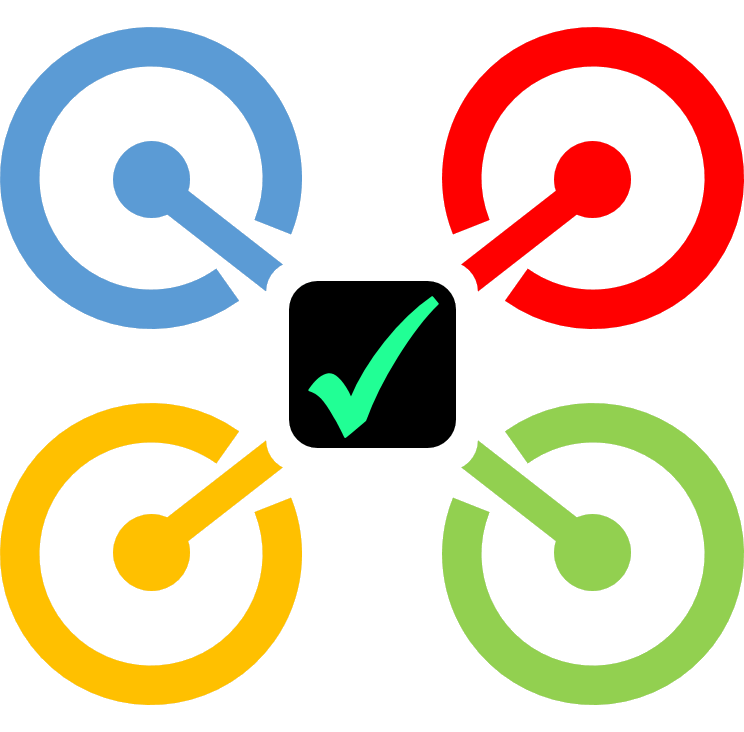
Improper quadcopter orientation
(Jul 30, 2015)
As I mentioned in this post, the first test of our rectangular bounding monitor had a few interesting problems. In order to discover the cause of the problems, we needed to run more tests. However, running new tests seemed to uncover a new problem: the monitor had no idea where it was.
More specifically, the rectangular monitor’s estimate of its X position (how far to the left or right it is) was completely off. This was surprising to us since our first test revealed no such issue. The consequence of this problem was that the monitor would cause the quadcopter to behave in insane ways. Though Sorin had the quadcopter hovering well within the safe zone, it would all of a sudden roll hard right because it thought that it was outside the safe zone. Obviously, this was not ideal.
To debug these kinds of issues, we log a bunch of data while the quadcopter flies. A quick look at the data revealed that the X position estimates the quadcopter was receiving from the sensors was way off (by as much as 50 meters at times). The monitor doesn’t actually get its data directly from the sensors. Instead, the raw sensor data is first run through what’s called sensor fusion. Sensor fusion takes data from a variety of sensors with different sources of error and computes an estimate of the current state (position, velocity, etc.) of the vehicle. Our first guess was that our code had somehow interacted in a weird way with the sensor fusion code.
To test this, we ran the quadcopter again, now logging raw GPS data, both with and without our monitor code running. From this test, we discovered two things:
- The raw GPS coordinates were just as inaccurate as the X position estimates coming from the sensor fusion code.
- The raw GPS coordinates were way off, even when we weren’t running our monitor code.
One possibility was that the GPS unit was damaged from our original test. However, we were able to rull this out because after the crash in our original test, we were able to get the vehicle up and running again, without any GPS issues. Another possibility was that the quadcopter’s mode was somehow affecting the position estimates. Quadcopter’s like the IRIS+ that we use often have multiple modes: stabilize, loiter, etc. These mode essentially dictate how much the autopilot software helps the human pilot. For example, stabilize just keeps the quadcopter at the pilot’s desired attitude, but doesn’t try to control position or altitude. Loiter, on the other hand, does holds the pilot’s desired altitude and position.
For a few reasons that are irrelevant to this post, we had been flying only in stabilize mode. Since stabilize doesn’t need any position estimates, it was possible that the software shuts down the GPS unit in order to save power. I spent a lot of time looking into this possibility (the ardupilot code on which we build is ~600,000 LOC). I even emailed the ardupilot developer list to ask whether the mode can affect state estimates, but the answer was no.
After several more frustrating flight tests, each leaving us more confused then the last, we finally bothered to look into what exactly the X position of the quadcopter meant. One key to the monitor working is that rolling left and right affects the X position of the quadcopter. As it turns out, the orientation of roll is relative to the initial orientation of the quadcopter when it is turned on. The X position, on the other hand, has nothing to do with the initial orientation of the quadcopter, and is instead fixed to be east/west. In our initial test of the rectangular bounding monitor, we just happened to initially orient the quadcopter so that roll corresponded to east/west movement. In subsequent tests, we did not. The bizarre X position estimates received by the quadcopter were caused by movement in what we thought was the irrelevant Y direction (but was in fact the X direction).
It was quite a relief to discover the cause of this issue, though we did feel a bit silly for not realizing it earlier. Obviously, we now always make sure that the initial orientation of the quadcopter is correct. And in the future, we plan to have the monitor take into account the yaw of the quadcopter so that it won’t matter how we initially orient it. Yet again, we see that formal verification doesn’t solve all your problems.

